Sometimes ebay scammers are a good source to spot fakes sold by major auction houses. Today for example, I was looking at Continue reading “The (fake) coinage of Petra”
The (fake) coinage of Lipara – Part IV
Hemilitron, reduced. CNS I.12
(At this link a genuine sample from BnF)
This case was already discussed on the Italian forum one year ago. The comparison says it all: here we are facing with modern forgeries struck by fake transferred dies. Coin 1 (Gorny & Mosch) is the host coin, coins 2 (Fritz Rudolf Künker GmbH) and 3 (ACR Auctions) are fakes. The same obverse fake die was used to realize a forgery of CNS I.20 I will report in a future post.
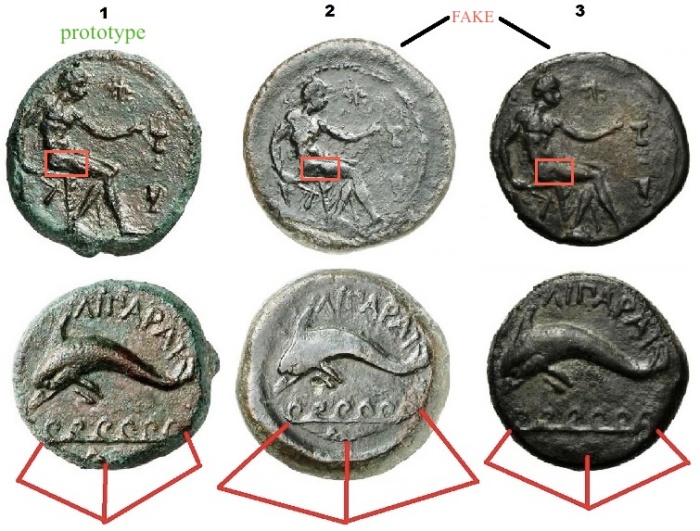
Following Continue reading “The (fake) coinage of Lipara – Part IV”
The (fake) coinage of Mamertini

I was inspired to write this post by a fake currently listed by the Italian auction house Numismatica Felisinea. Out of curiosity I examined the subject, and I realized that many fakes of Mamertini have been sold in recent years… Continue reading “The (fake) coinage of Mamertini”
Marcus Aurelius “unpublished and unknown”
The auction house Nomos AG has recently listed this coin on auction (Estimate: 500 CHF). The lot was pointed out privately to me by an american collector who first had some suspects on it.
After I started this discussion on lamoneta, expert discussed and there was agreement it is likely a modern fake. The lot was withdrawn at the last minute.
Currently on auction: fake gold Tremissis of Leo I

The US auction house Ira & Larry Goldberg Coins & Collectibles is offering on auction this well known modern forgery. Continue reading “Currently on auction: fake gold Tremissis of Leo I”
The (fake) coinage of Lipara – Part III
Hemilitron, reduced. CNS I.11
(At this link a genuine sample from BnF)
A modern fake couple of dies has been detected also for this reduced hemilitron, which is among the rarest issues of Lipara: for this variant with dolphin left CNS reports only three specimens, a fourth is in the BnF collection, linked above.
At least three forgeries struck by those dies have been sold in recent years. Let’s try to reconstruct what happened. We have to start from this coin:
On June 2012 the German seller Numismatik Lanz sold this coin on his ebay store.
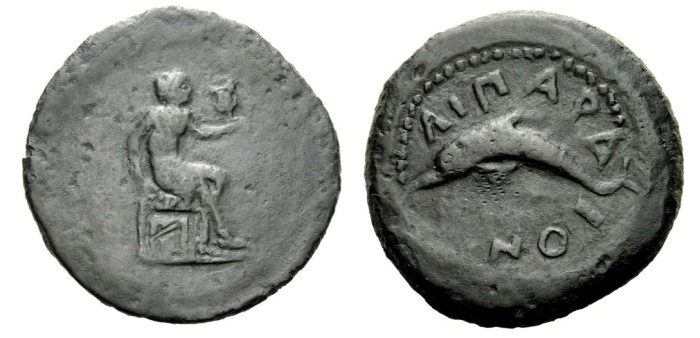

Despite once that coin was probably genuine, today we can consider it as a fake. In fact the ignorant guy who had that coin in his hands had not realized that he was handling a gem, a great rarity, of which a unique sample was previously known, Lipara CNS 10:


The asshole “restorer” smoothed the fields of the coin, deleting the six pellets below the dolphin, of which traces are still visible. He lowered fields to enhance the reliefs, totally deranging style of main devices, also the dotted border on reverse are directly engraved on the flan by lowering field; not to mention the tooling of reliefs, the eye and legs of Hephaistos, the chair, the kantharos, the eye of dolphin. Nothing original has remained. The potential second known specimen of CNS 10 is now a faked/tooled CNS 11. BTW, this same scrap was sold by the French seller CGB two years later, among many other junk coins with the (in)famous pedigree “YMSR collection”, fixed price list: 750 Eur!!
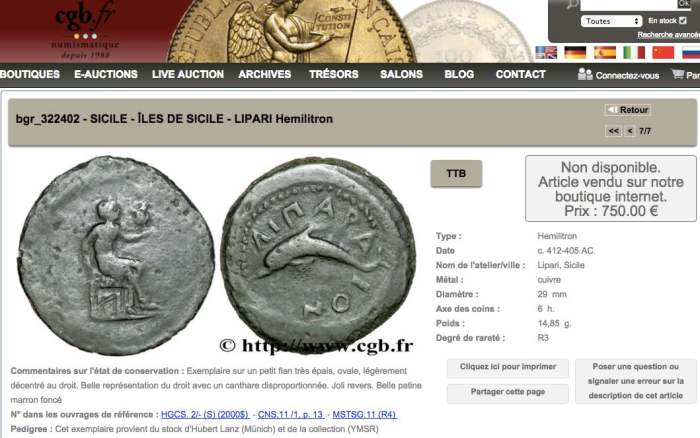
The asshole who wasted that coin even had the great idea of transferring it to create a fake couple of dies…
Just four days earlier Lanz had sold this fake on his ebay store: 177 Eur final price after 17 bids. This coin is clearly a fake, struck by modern dies, transferred from the previous sample we discussed. In this case the weight is wrong (9.81 g): the genuine specimens have weights between 14.5 and 18.1 grams. Interesting to note the effects of the modern restrike on the genuine ancient flan, which has blasted away the metal surface layer in correspondence of reliefs.


Another sample, Numismatik Lanz again, just five months later,what an abundance of rarities on that ebat store!!!
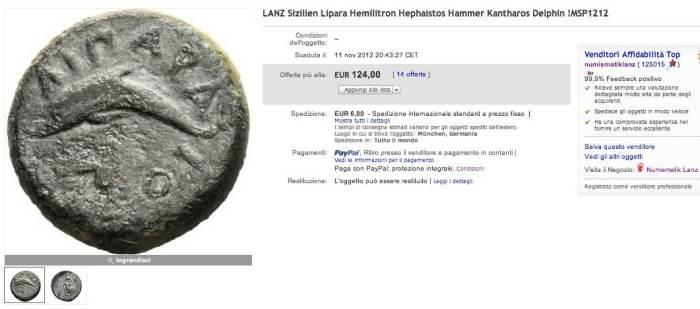
In this case the forger chose a slightly heavier ancient flan, but still underweight (10.2 g), but he missed the correct strike, and he minted the obverse type on the reverse side, and vice-versa. For unknown reasons he recutted the last letter of legend (N) on the reverse die, traces of the old letter are still visible below the new one.
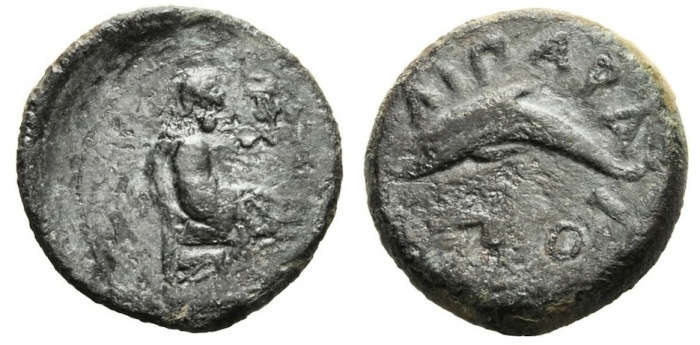
This fake has been re-listed and sold about one month ago, April 2016, by Classical Numismatic Group, I could not believe my eyes when I saw this obvious fake listed on their online catalog, and even reading description, where they define “obverse” the hammer side of the flan. BTW, even the reference reported in description is wrong (CNS 9); this is the way work by the “experts” whose salaries are feed by buyers’ fees that collectors have to pay when they win a lot:

Finally a third sample appeared in August 2014, sold by the German seller Savoca Coins on his ebay shop, 170 Eur final price after 26 bids. Also in this case weight is wrong (9.78g), obviously the ignorant forger was wrong to choose the ancient flans on which he used the modern dies:
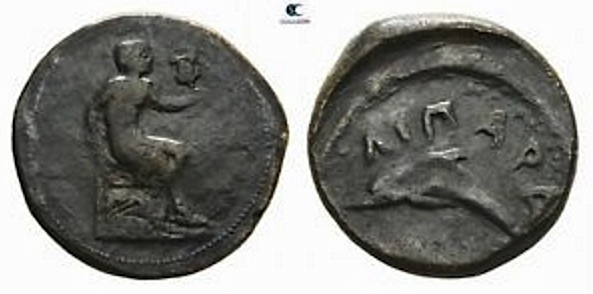

to be continued…
Forthcoming: CNS 12, CNS 15, CNS 16, CNS 21, CNS 28, CNS 31
The (fake) coinage of Lipara – Part II (with additions and corrections)
I revised this post (and Part I too), adding many new fake samples, after some anonymous Italian collectors gently gave me some pics of old listings stored in their personal digital archives.
………………………………………………………………………………………………………….
I open the second part of this investigation on the pervasive and widespread forgeries of Lipara by sharing the related plate from Weber collection, to give even more evidences to my statements concerning the correct style, fabric and shape of flans for this mint.
And now let’s go on…
Tetras CNS I.5
(At this link a genuine sample from British Museum)
Also this type of Lipara has been faked in many ways. Let’s start from the most obvious cases, the first three already listed by Forvm users, all the other cases are newly disclosed.
This one was sold on ebay as reproduction in January 2009:
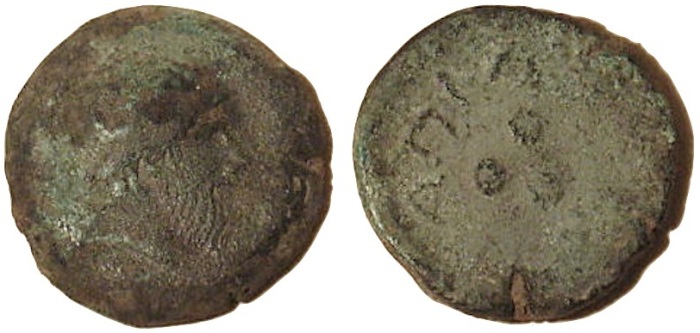
This sold as genuine on ebay in January 2013 (122 Eur)
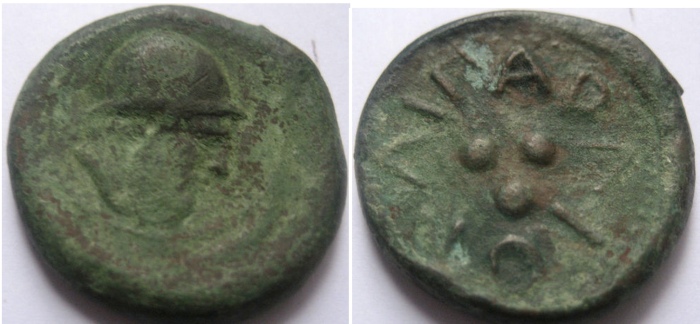
This sold as genuine by the Siculo-german scammer Aitnacoins in June 2013
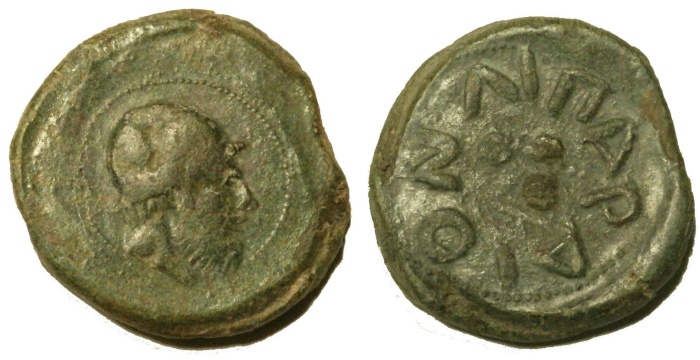
And now the newly detected fakes, not published on Forvm and Forgery Network:
This is a cast fake, also sold by Aitnacoins on June 9 2010. Final bid: 858 USD
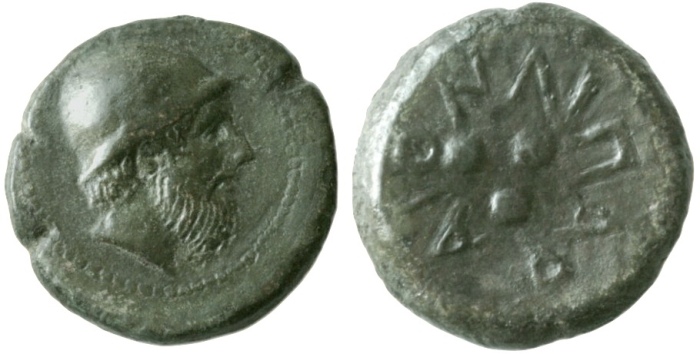
Several fakes were also sold by major auction houses; e.g. the German seller Fritz Rudolf Künker:
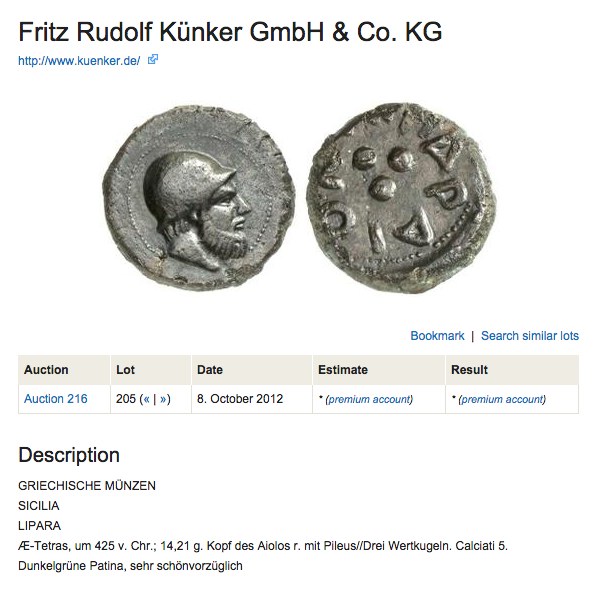
This is a fake, clearly pressed by modern dies on a real ancient flan, look at the flat fields and the many radial small fractures, all features typical of the pressed forgery process.

The obverse die is invented, the interrupted dotted border intersecting the beard is inconsistent with the style of the real coinage of Lipara. Weight is wrong, the genuine specimens weight from 22 to 28 g, this coin is an impossible hybrid: the types of the Tetras with the weight of the Hexas. A seller who lists this coin is totally ignorant about the coinage of Lipara. Maybe just ignorance. Look at the following listing by the same seller:
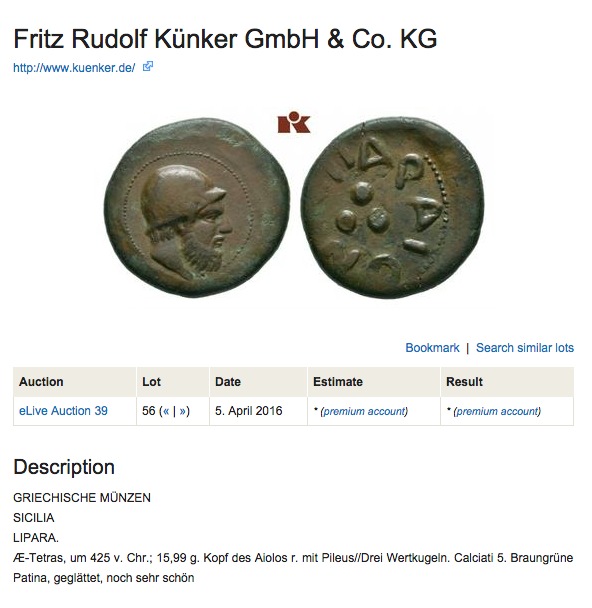
We already saw the same trick used by another German seller in the first part of this article, when they sell clones they list pictures with the coins differently oriented. Now see how they look if well oriented (I rotated reverse of the first one):
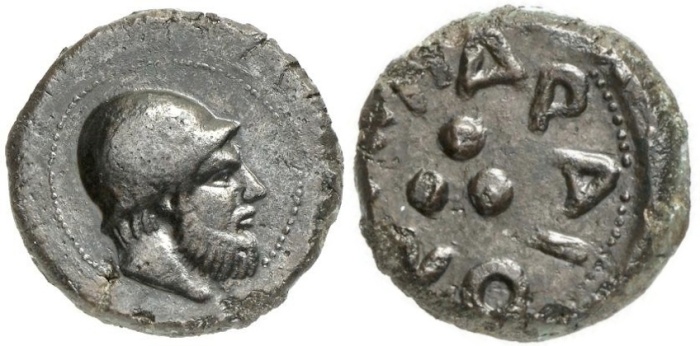
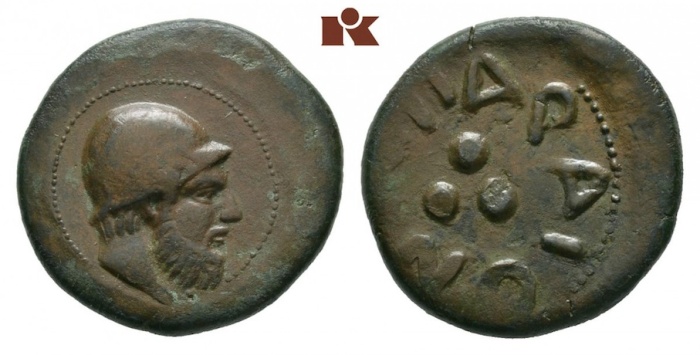
Ooops! they are Twins! The coin sold by Künker just a month ago (BTW, price realized: 625 Eur!!) is a cast twin of the pressed fake sold by the same seller in 2012. Chapeau!
Here a different sample from the same workshop (same dies), sold by the same seller:
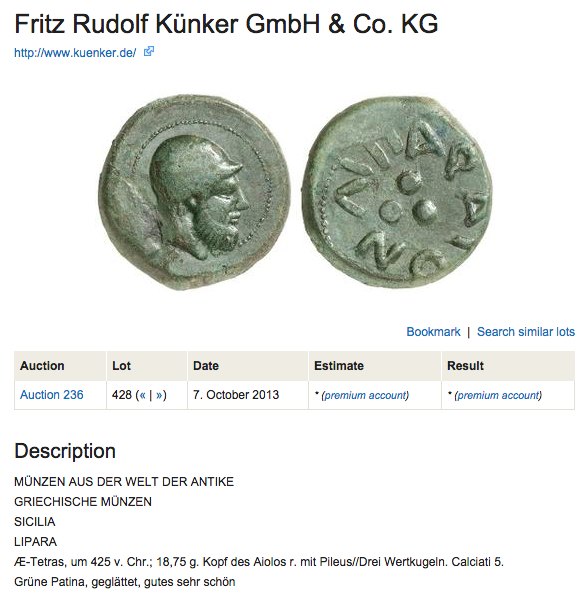
This time clearly something went wrong during the casting process…
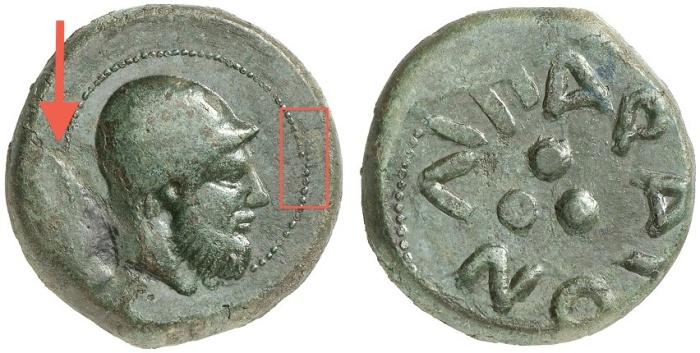
Künker seems really specialized in selling Lipara fakes. Herea nother case:
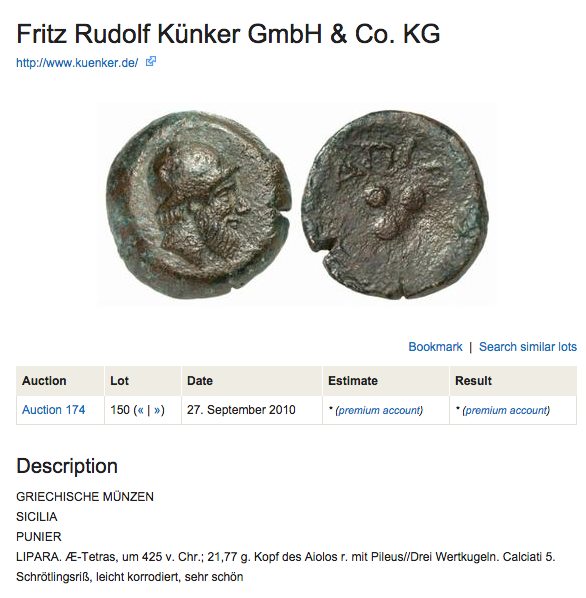
This one is a cast fake. Host coin: Nomos 3, lot 36

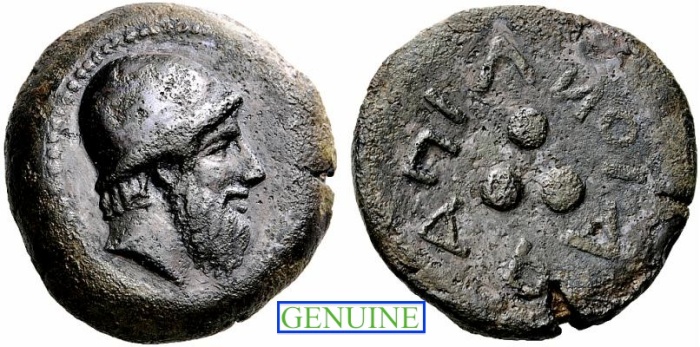
Let’s go on with another case. The British auction house Roma Numismatic Limited listed this dreadful coin in March 2012:
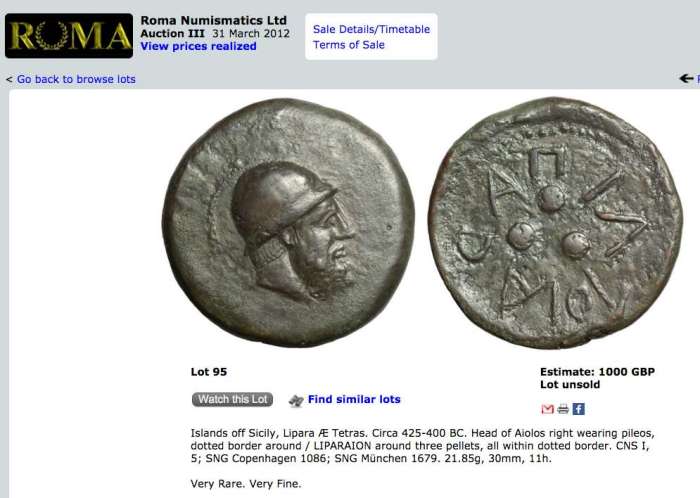
The lot went unsold, and six months later the seller tried again to sell it, 25% less estimate, and an attractive addition to description: “exceptionally well preserved for the type“. Nothing to do, again no fish fell into the net, and the exceptional coin went unsold again.
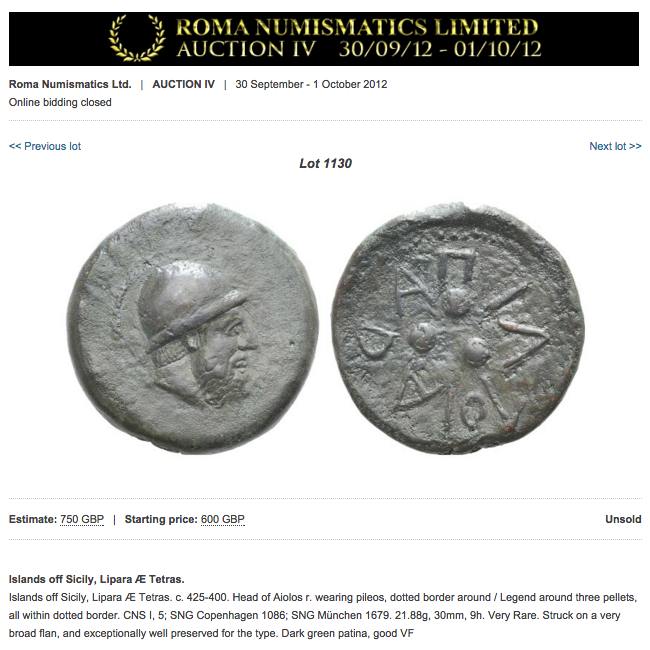

Style and epigraphy are so wrong that I am uncertain whether this coin is struck by modern dies engraved by a a drunk forger, or it was once genuine now entirely re-engraved by a drunk tooler; maybe it is both things?. Only one thing I’m sure, it’s junk. The scrap was recycled by Lanz on his ebay shop, just two weeks after the Roma sale!! The ebay auction realized final price 517 Eur, after 25 bids. I am grateful to those who gave their contribution to this article by giving me even screenshots of the old ebay listings.
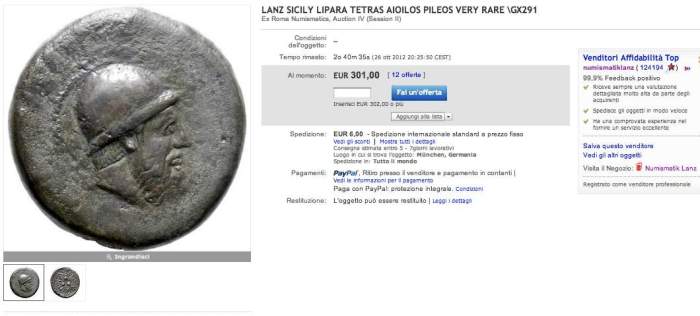
There are other sample for this type out there I suspect to be fakes, like this one listed by Gorny (traces of undertype: obverse 3h-8h, dotted border of the real ancient coin used as flan? no overstrikes detected by Calciati for Lipara). Further studies with coins in hand would be needed to really realize the magnitude of the phenomenon, which already just by a photographic survey seems of dramatic proportions.
Onkia CNS I.7
(At this link a genuine sample from CNS, here another genuine one from BM).
Also this rare type (only six specimens listed by CNS, all showing the same peculiar features of flan saw in the genuine samples linked above) has been targeted by forgers. Some attempts were really unsuccessful, like this one, listed for 1400 eur fixed price in march 2013, on the ebay store by the notorius siculo-german scammer Aitnacoins:
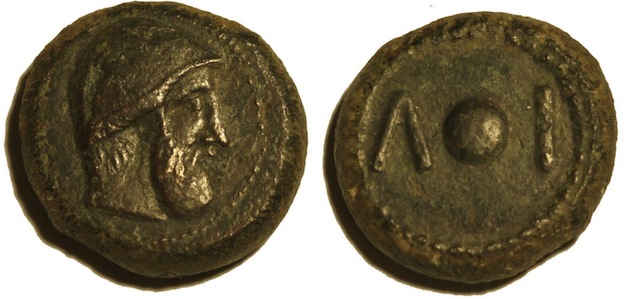
Another forgery was sold on 2013 by the German seller Numismatik Lanz, on his ebay shop. (source lamoneta):
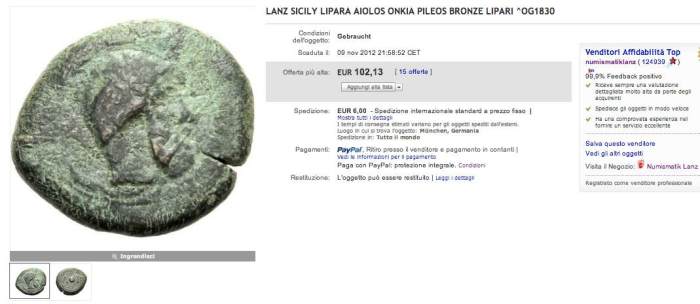
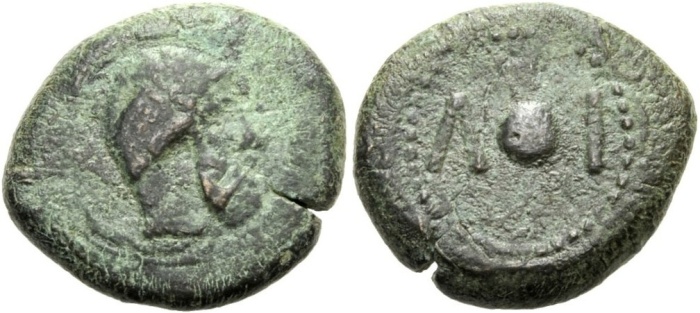
Also in this onkia we can see the flat fields and the wrong shape of the flan, inconsistent with the real coinage of Lipara. In this case is interesting to note the “goose bumps” look of surfaces and the particular feature of the borders showing multiple radial microcracks, all signs that the ancient genuine bronze flan was heated before the modern re-strike by press. The green patina is clearly artificial.
For the same reasons of inconsistency of fabric also this coin sold by CNG is probably a modern forgery artificially aged and corroded.
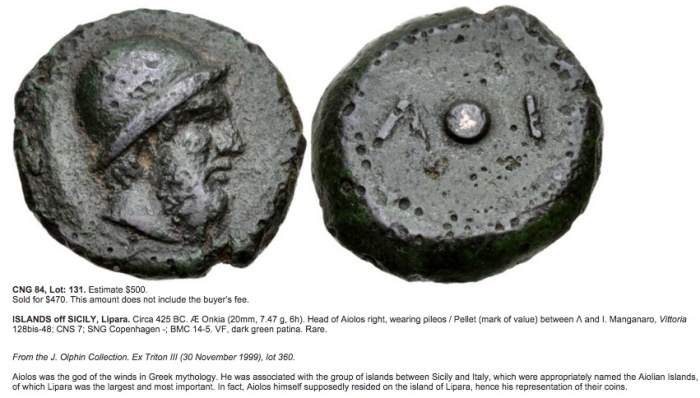
Finally for Lipara CNS 7, we have this group of cast fake twins, the first two sold by Roma Numismatics Limited, the third by ArtCoins Roma, the fourth by Myntauktioner i Sverige AB.
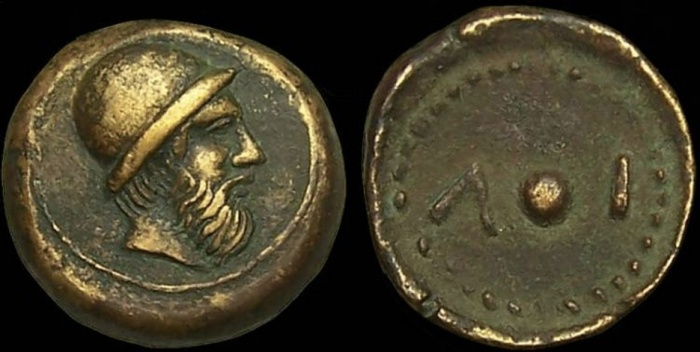
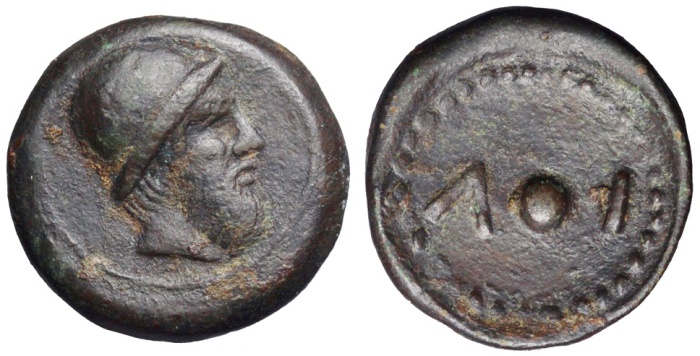
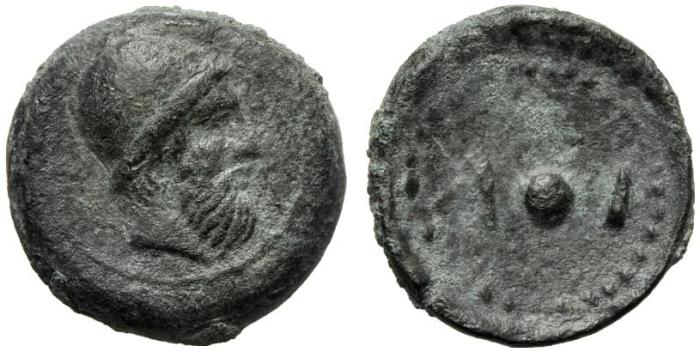
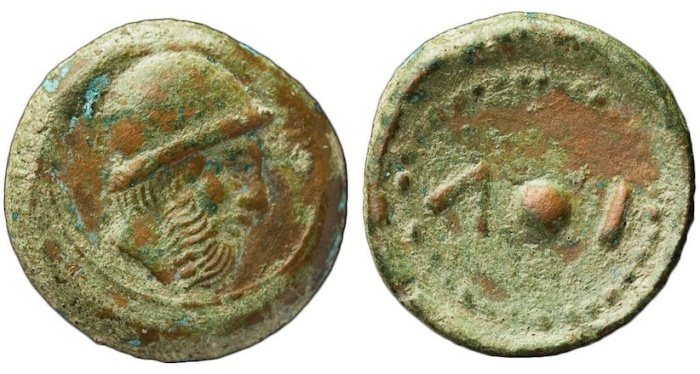
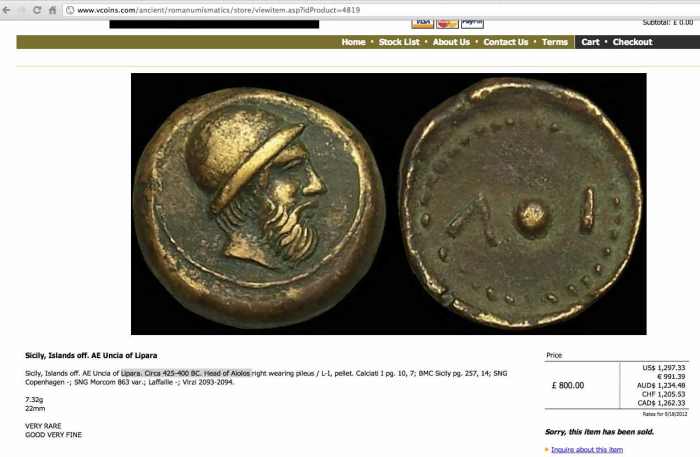

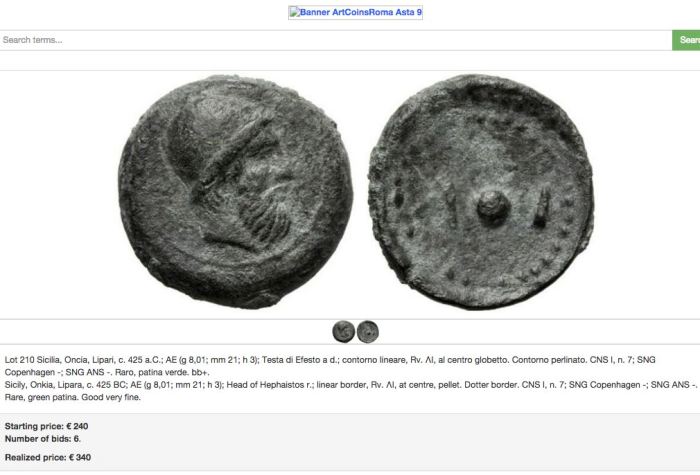
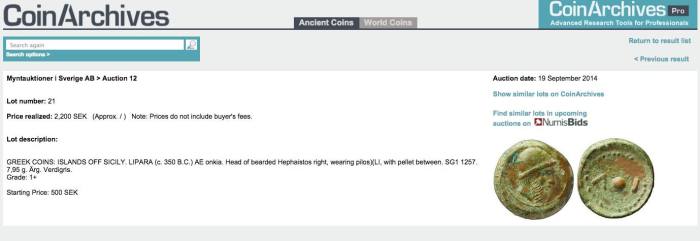
to be continued…
Forthcoming fakes: CNS 11, CNS 12, CNS 15, CNS 16, CNS 21, CNS 28, CNS 31
Fake piastra of Urbano VIII currently on auction.
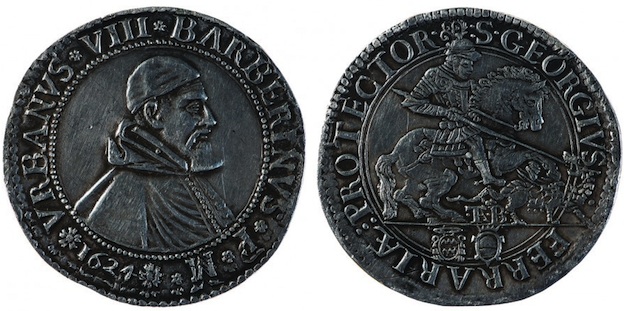
As spotted by the smart experts of the Italian forum Lamoneta (sources here and here), the Italian auction house Bolaffi S.p.A. is currently listing this forgery, obtained by modern transferred dies
Continue reading “Fake piastra of Urbano VIII currently on auction.”
Another recommended reading about dies production.

I share an interesting article by Clive Stannard, titled “EVALUATING THE MONETARY SUPPLY: WERE DIES REPRODUCED MECHANICALLY IN ANTIQUITY?”. The work deals with the production of dies in antiquity. By this reading you can also indirectly acquire interesting notions to understand how some kind of modern forgeries are made.
Download the article at this link: Stannard 2008b
A wrong attribution.
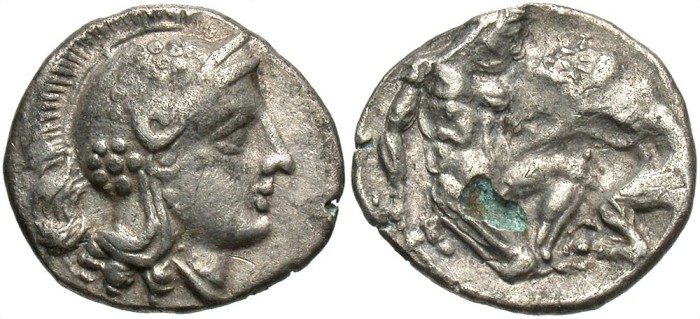
This post is not about a forgery, but about a wrong attribution of a genuine coin.
Look at this coin for example. Continue reading “A wrong attribution.”
The (fake) coinage of Lipara. (with additions and corrections)
 I ironically titled this post like an essay for a reason: today a collector eager to learn something on the coinage of Lipara he would be in great difficulty, unless he gets the rare and expensive CNS volume. In fact online databases would surely non help him, because by now, after years of auctioned forgeries, on the internet there is very little genuine to see on this mint.
I ironically titled this post like an essay for a reason: today a collector eager to learn something on the coinage of Lipara he would be in great difficulty, unless he gets the rare and expensive CNS volume. In fact online databases would surely non help him, because by now, after years of auctioned forgeries, on the internet there is very little genuine to see on this mint.
On this post I’ll point out some samples showing how many fakes of Lipara have been listed in recent years by ebay sellers and even more by major auction houses. This is Continue reading “The (fake) coinage of Lipara. (with additions and corrections)”
Cast fake sestertius of Severus Alexander currently on auction

The Austrian auction house VL Nummus is currently auctioning this cast fake, Continue reading “Cast fake sestertius of Severus Alexander currently on auction”
Oh my… they are all forgeries!
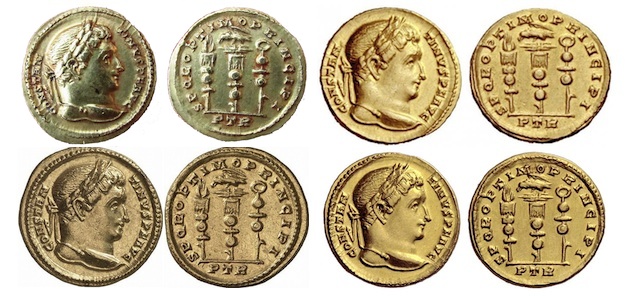
I just realized all these samples of gold solidus of Constantine I are forgeries, Continue reading “Oh my… they are all forgeries!”
Cast fake denarius of Nero currently on auction.

The Spanish auction house Jesús Vico, S.A. is currently listing this known cast fake (samples here and here), for 250 Eur starting Continue reading “Cast fake denarius of Nero currently on auction.”
Fake patina: recommended reading.
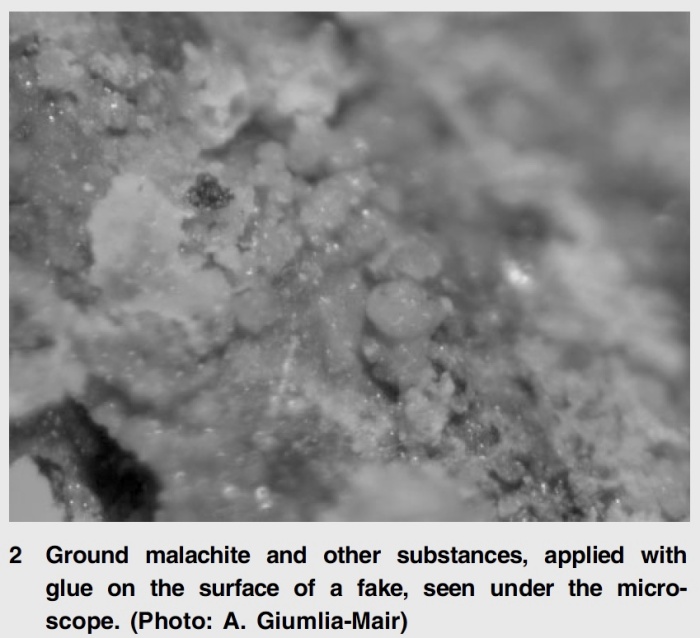
Article by A. Giumlia-Mair and E. Lucchini, download at this link: Surface_analyses_on_modern_and_ancient_c
Abstract:
Over the last two decades, together with the increasing prices in the antique market and the proliferation of private ‘hobby collectors’, the number of fakes in circulation among antique shops, auctions and even institutions and museums has noticeably increased. So called ‘bronzes’ seem to be the favourite objects for both fakers and inexperienced collectors. In some cases the fakes are well made, so that often the professional can be fooled by them also. In this paper some examples of modern and ancient fake objects will be discussed.
New dies? No, fake dies!
Hard times for forgers now the online databases can help collectors to spot their frauds. You just need some good reference books, an internet connection, some patience, and some time to spend surfing online sales, ebay and auction databases.
For example tonight I was surfing and I saw on acsearch this bronze coin of Syracuse, struck under Pyrrhos…
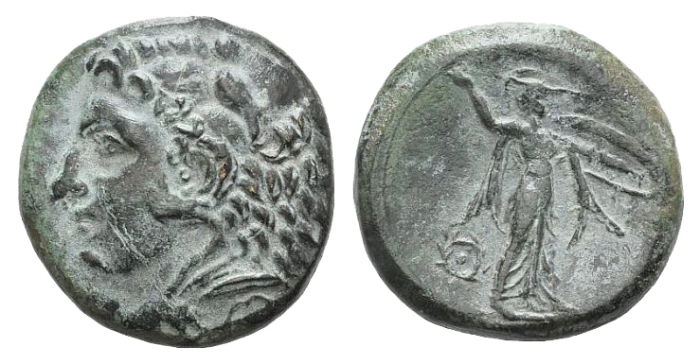
This coin was auctioned by the British auction house Roma Numismatics Limited on september 2012. The dies are not listed by Calciati or other reliable references about this coinage. So I just compared the type with the many modern dies sold on ebay in recent years, which I collected in a folder of my PC, and… Continue reading “New dies? No, fake dies!”
Detecting signs of modern engraving of dies: the Haslemere Hoard
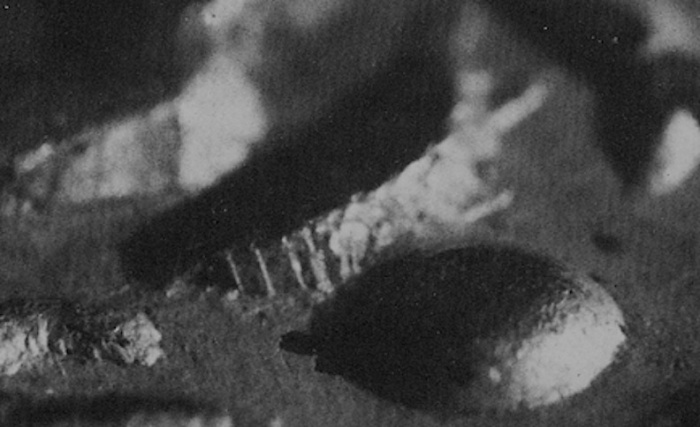
This is a didactic post about an amazing story occurred in the second half of XX century. In 1962 D. F. Allen published on the British Numismatic Journal Vol. 31 an article (available here), titled “The Haslemere Hoard”, discussing a recently found hoard of new types of Celtic staters declared “found in Britain”. In the following years many collectors dreamed of adding Continue reading “Detecting signs of modern engraving of dies: the Haslemere Hoard”
New forgeries circulating on the bay, and a match from major seller.
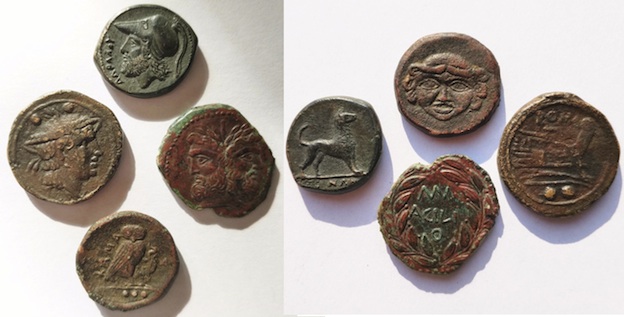
This lot currently auctioned on ebay is not actually a dangerous listing, as the seller states they are modern Continue reading “New forgeries circulating on the bay, and a match from major seller.”
Suspect AR drachm of Messana currently on auction.

The U.S. auction house Pegasi Numismatics is currently listing Continue reading “Suspect AR drachm of Messana currently on auction.”
“Unpublished” bearded Athena currently on auction
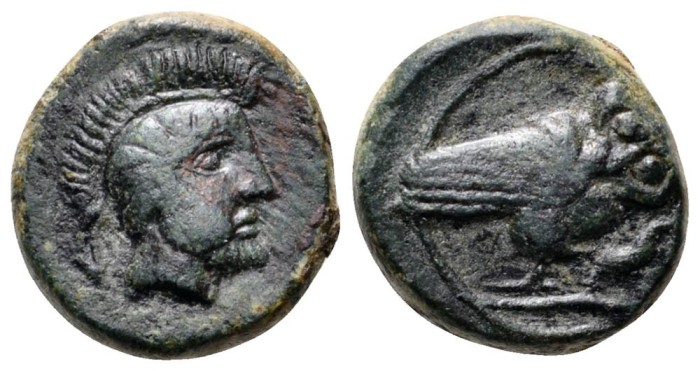
The British auction house Roma Numismatics Limited is currently listing this laughable coin… Continue reading ““Unpublished” bearded Athena currently on auction”







